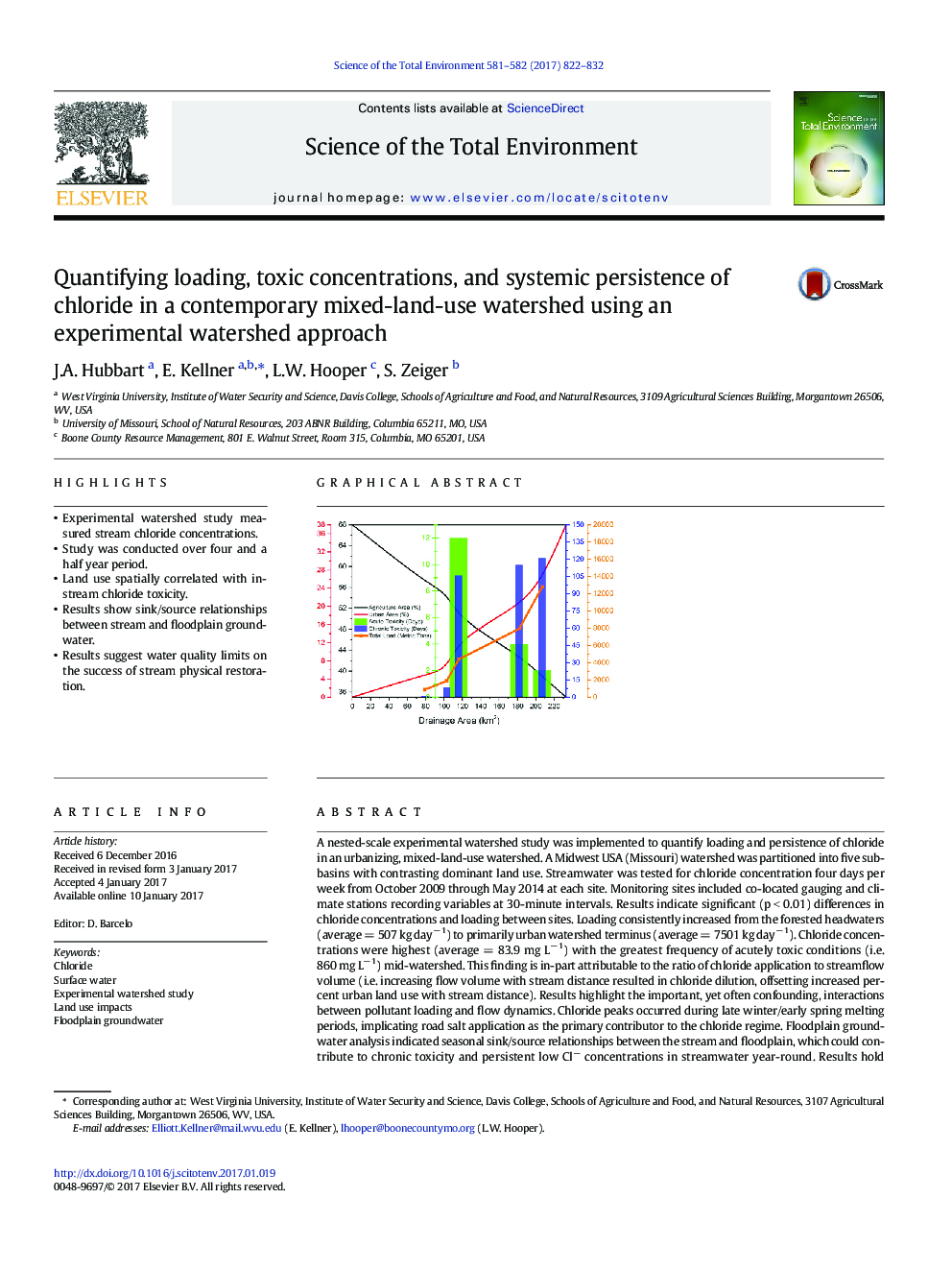| Article ID | Journal | Published Year | Pages | File Type |
|---|---|---|---|---|
| 5751828 | Science of The Total Environment | 2017 | 11 Pages |
â¢Experimental watershed study measured stream chloride concentrations.â¢Study was conducted over four and a half year period.â¢Land use spatially correlated with in-stream chloride toxicity.â¢Results show sink/source relationships between stream and floodplain groundwater.â¢Results suggest water quality limits on the success of stream physical restoration.
A nested-scale experimental watershed study was implemented to quantify loading and persistence of chloride in an urbanizing, mixed-land-use watershed. A Midwest USA (Missouri) watershed was partitioned into five sub-basins with contrasting dominant land use. Streamwater was tested for chloride concentration four days per week from October 2009 through May 2014 at each site. Monitoring sites included co-located gauging and climate stations recording variables at 30-minute intervals. Results indicate significant (p < 0.01) differences in chloride concentrations and loading between sites. Loading consistently increased from the forested headwaters (average = 507 kg dayâ 1) to primarily urban watershed terminus (average = 7501 kg dayâ 1). Chloride concentrations were highest (average = 83.9 mg Lâ 1) with the greatest frequency of acutely toxic conditions (i.e. 860 mg Lâ 1) mid-watershed. This finding is in-part attributable to the ratio of chloride application to streamflow volume (i.e. increasing flow volume with stream distance resulted in chloride dilution, offsetting increased percent urban land use with stream distance). Results highlight the important, yet often confounding, interactions between pollutant loading and flow dynamics. Chloride peaks occurred during late winter/early spring melting periods, implicating road salt application as the primary contributor to the chloride regime. Floodplain groundwater analysis indicated seasonal sink/source relationships between the stream and floodplain, which could contribute to chronic toxicity and persistent low Clâ concentrations in streamwater year-round. Results hold important implications for resource managers wishing to mitigate water quality and aquatic habitat degradation, and suggest important water quality limitations to stream restoration success in complex urban aquatic ecosystems.
Graphical abstractDownload high-res image (216KB)Download full-size image
